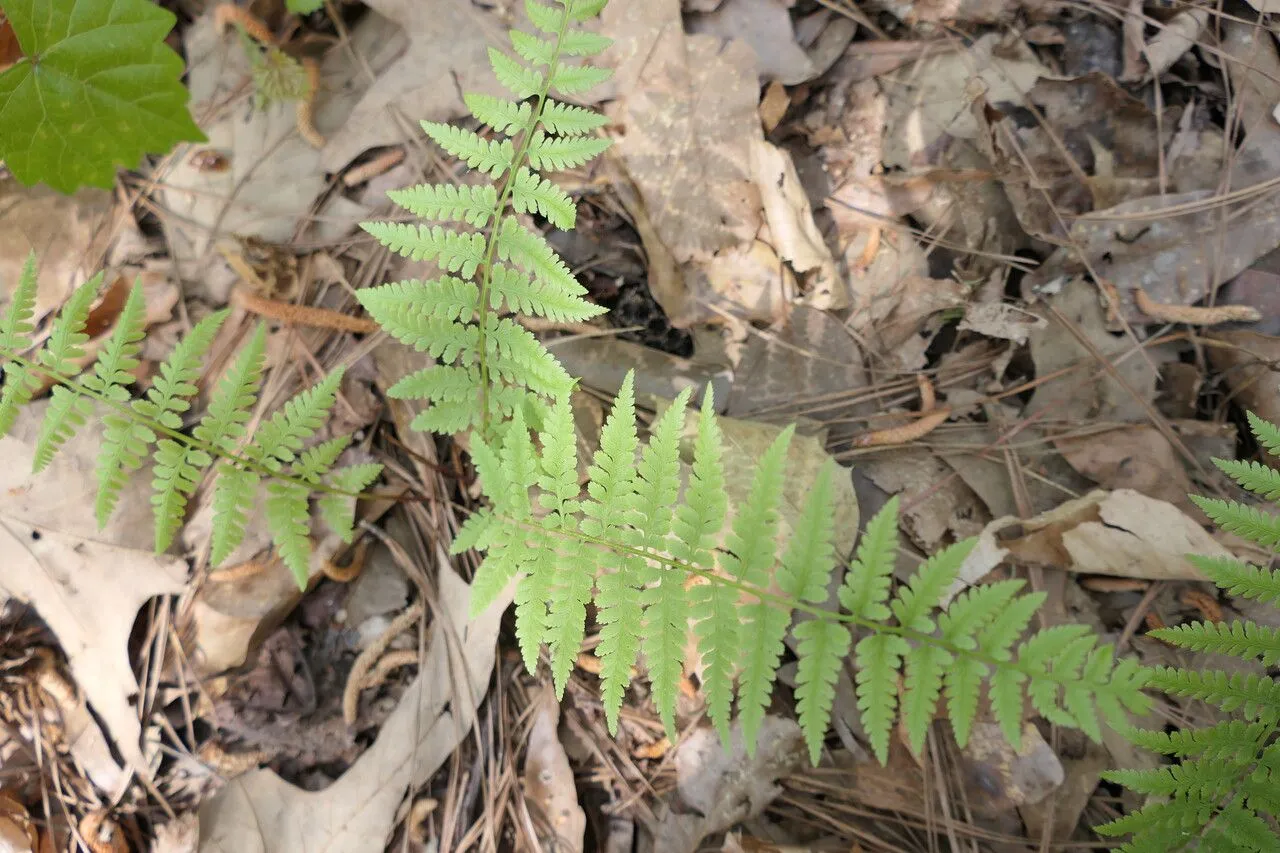
Author: (Michx.) Desv.
Bibliography: Mém. Soc. Linn. Paris 6: 266 (1827)
Year: 1827
Status: accepted
Rank: species
Genus: Athyrium
Vegetable: Unknown
Observations: C. & E. U.S.A.
Asplenium ladyfern, known scientifically as Athyrium asplenioides, is a fascinating and delicate member of the Aspleniaceae family. This elegant fern has garnered attention for its aesthetic appeal and environmental adaptability, making it a cherished component of various ecosystems and a popular choice among plant enthusiasts and botanists alike.
Description and Characteristics:
Asplenium ladyfern is characterized by its intricate and finely divided fronds, which impart an airy and feathery appearance. The fronds are typically bright green and can grow to impressive lengths, contributing to the plant’s lush, almost ornamental look. Each frond unfurls in a delicate curl, displaying a pattern that echoes its close relation to other members of the fern family. The plant’s overall growth habit is vase-shaped, with fronds gracefully arching outwards from a central base.
Habitat and Distribution:
Asplenium ladyfern thrives predominantly in the eastern and central regions of the United States. It prospers in moist, shaded environments such as forest underbrush, alongside streams, and in damp woodland areas where the soil remains consistently moist but not waterlogged. The fern’s ability to thrive in these conditions highlights its preference for environments with filtered sunlight and high humidity, which closely mimic its natural habitat.
Ecological Significance:
In its natural habitat, Asplenium ladyfern plays a vital role in the local ecosystem. It provides ground cover that helps in soil retention and moisture conservation. Additionally, it offers habitat and protection for small forest creatures and contributes to the biodiversity and stability of forest floor ecosystems. The dense foliage of the fern further assists in maintaining the humidity and microclimate necessary for various woodland species.
Historical Context:
The scientific classification of Asplenium ladyfern can be traced back to the early 19th century. It was first described in 1827, a testament to its long-standing recognition in the field of botany. The full scientific designation, Athyrium asplenioides, reflects its classification within the broader family of Aspleniaceae, indicating its relations to other similar fern species.
Cultivation and Care:
For gardeners and horticulturists, Asplenium ladyfern is an attractive option due to its resilience and minimal maintenance requirements. To cultivate this fern successfully, it is essential to replicate its natural environment. Planting Asplenium ladyfern in a shaded or partially shaded area with rich, loamy soil that retains moisture but offers good drainage will yield the best results. Regular watering to maintain soil moisture levels without oversaturating is crucial for its growth. Additionally, mulching around the base can help conserve moisture and keep the roots cool.
In conclusion, Asplenium ladyfern, with its elegant foliage and ecological importance, is a remarkable species that enriches both natural landscapes and cultivated gardens. Its historical significance and adaptive nature make it a plant worth appreciating, whether you are a seasoned botanist or a casual gardener.
Eng: southern lady fern
En: Asplenium ladyfern, Southern Ladyfern, Southern lady fern
Taken Mar 29, 2022 by Maarten Vanhove (cc-by-sa)
Taken Mar 29, 2022 by Maarten Vanhove (cc-by-sa)
Taken Mar 29, 2022 by Maarten Vanhove (cc-by-sa)
Taken Mar 29, 2022 by Maarten Vanhove (cc-by-sa)
© copyright of the Board of Trustees of the Royal Botanic Gardens, Kew.
Family: Myrtaceae Author: (F.Muell.) K.D.Hill & L.A.S.Johnson Bibliography: Telopea 6: 402 (1995) Year: 1995 Status:…
Family: Rubiaceae Author: Pierre ex A.Froehner Bibliography: Notizbl. Bot. Gart. Berlin-Dahlem 1: 237 (1897) Year:…
Family: Sapindaceae Author: Koidz. Bibliography: J. Coll. Sci. Imp. Univ. Tokyo 32(1): 38 (1911) Year:…
Family: Asteraceae Author: A.Gray Bibliography: Pacif. Railr. Rep.: 107 (1857) Year: 1857 Status: accepted Rank:…
Family: Fabaceae Author: Medik. Bibliography: Vorles. Churpfälz. Phys.-Ökon. Ges. 2: 398 (1787) Year: 1787 Status:…
Family: Aspleniaceae Author: (Cav.) Alston Bibliography: Bull. Misc. Inform. Kew 1932: 309 (1932) Year: 1932…